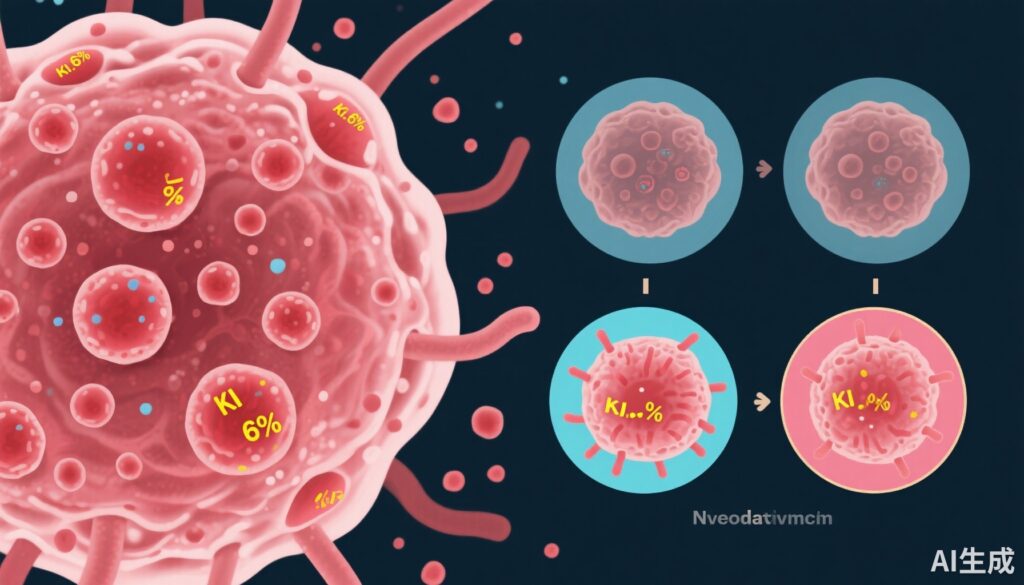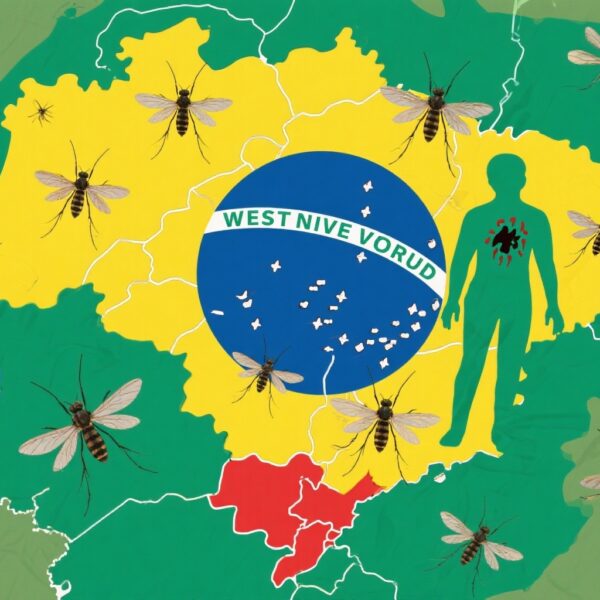Study Background
In breast cancer management, the proliferation marker Ki-67 has long been utilized to understand tumor biology and guide treatment decisions. Despite its widespread use in initial tumor characterization, the prognostic relevance of changes in Ki-67 levels during neoadjuvant chemotherapy (NACT) remains inadequately defined. Given that NACT aims to reduce tumor burden and improve surgical outcomes, understanding how Ki-67 dynamics reflect tumor response could refine risk stratification and treatment tailoring. This study addresses this unmet need by analyzing Ki-67 changes and their association with long-term outcomes.
Study Design and Population
This population-based cohort study leveraged data from the Swedish National Breast Cancer Register (NBCR), identifying 2,494 women with invasive breast cancer treated with NACT between 2007 and 2020. The cohort included diverse molecular subtypes: estrogen receptor-positive/human epidermal growth factor receptor 2-negative (ER+/HER2−), triple-negative breast cancer (TNBC), and HER2-positive tumors. Standardized procedures measured Ki-67 levels pre- and post-NACT, alongside clinical and pathological data. The primary endpoint was breast cancer-specific survival (BCSS), with secondary analyses focusing on the prognostic value of Ki-67 dynamics within the Neo-Bioscore functional prognostic model.
Key Findings
Among the cohort, the median pre-NACT Ki-67 was 40%, indicating high tumor proliferation at baseline. Residual disease was present in 1,826 patients, with a median post-NACT Ki-67 of 12%. Notably, lower post-NACT Ki-67 levels correlated strongly with improved BCSS across the entire cohort (p < 0.0001). Subgroup analyses revealed significant associations in ER+/HER2− (p=0.0001) and TNBC (p=0.0007), but not in HER2+ tumors (p=0.8223).
The addition of post-NACT Ki-67 to the existing Neo-Bioscore model improved its prognostic accuracy, increasing the C-index from 0.758 to 0.802. The study found tight correlations among post-NACT Ki-67, absolute change, and relative change (percent reduction). Optimal cut-offs for relative Ki-67 reduction identified high- and low-risk groups: ER+/HER2− patients with ≥48% reduction, and TNBC patients with similar thresholds, both stratifying patients into distinct prognostic categories (p < 0.0001).
Importantly, patients with residual disease who achieved at least 48% Ki-67 reduction post-NACT exhibited survival outcomes comparable to those with complete pathological response (p=0.13), suggesting the potential of Ki-67 change as a surrogate for treatment efficacy.
Interpretation and Clinical Implications
This study establishes that changes in Ki-67 during NACT are independently prognostic and can enhance existing risk models such as the Neo-Bioscore. Particularly in ER+/HER2− and TNBC subtypes, significant Ki-67 reductions identify patients with better long-term survival prospects. These findings support incorporating post-NACT Ki-67 assessment into clinical decision-making frameworks, potentially guiding decisions on adjuvant therapy escalation or de-escalation.
Residual disease after NACT, often viewed as a poor prognostic indicator, may warrant further biological investigation of Ki-67 levels to refine post-treatment strategies. This dynamic marker could serve as a real-time indicator of tumor response, fostering more personalized and adaptive treatment approaches.
Limitations and Future Directions
Although robust, this study is observational with inherent limitations, including variability in Ki-67 assessment and external validity adaptions. Future prospective trials should validate Ki-67 change thresholds and explore their integration into clinical algorithms. Also, mechanistic studies are necessary to elucidate biological pathways underpinning Ki-67 modulation during therapy.
Conclusion
Ki-67 dynamics during neoadjuvant therapy provide valuable prognostic information beyond static baseline measures. Incorporating relative Ki-67 change improves risk stratification and could influence post-neoadjuvant treatment planning. Further research targeting residual disease Ki-67 will be crucial for advancing personalized breast cancer care.
Funding and Data Availability
This research was supported by grants from Cancerfonden, Vetenskapsrådet, Cancerföreningen i Stockholm, and Region Stockholm. Data used in this study are available from the NBCR, subject to ethical approvals.
References
Refer to the original publication for detailed bibliographic information and related literature on Ki-67 prognostics in breast cancer.



